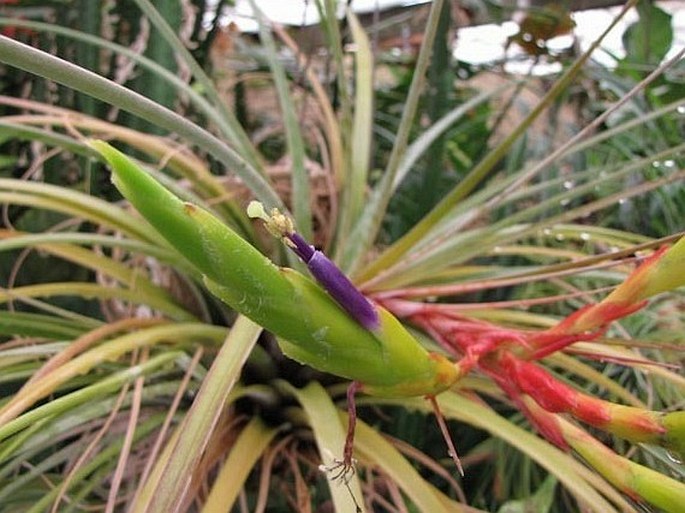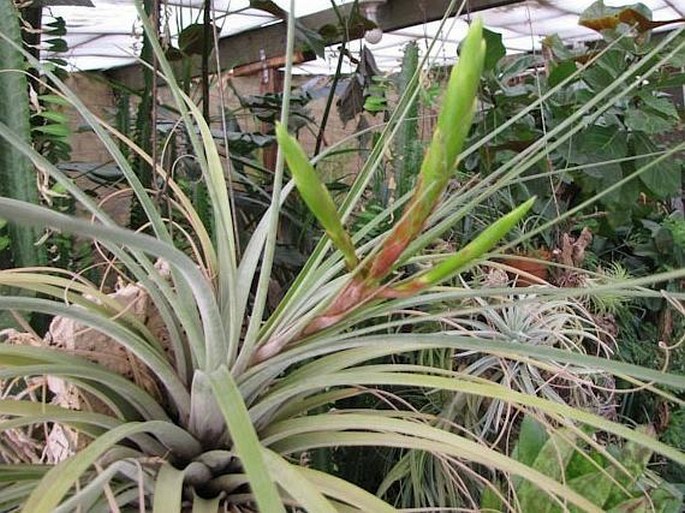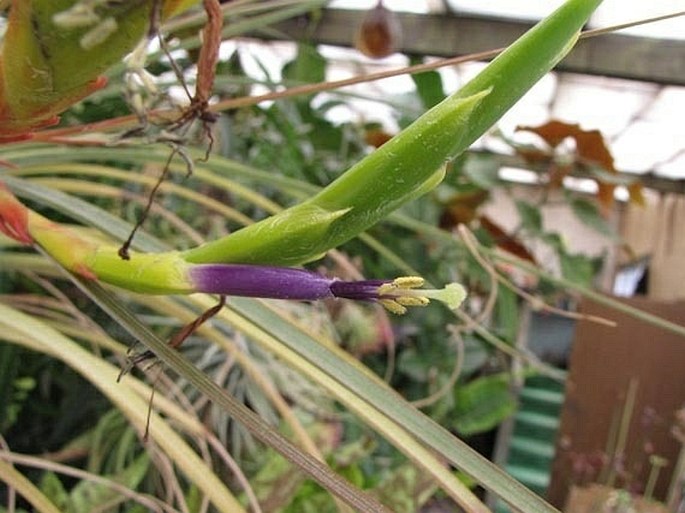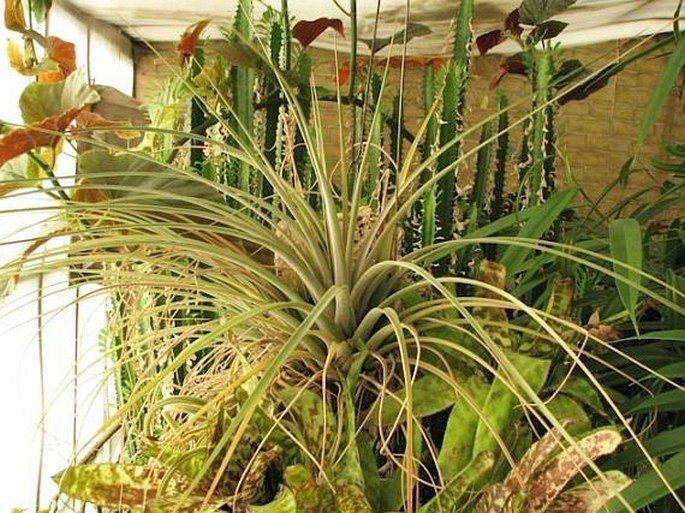Syn.: Platystachys macrostachya Beer
Family: Bromeliaceae Juss.

Distribution: From Mexico through Central America to Colombia, Venezuela and Surinam, and from Georgia and Florida in US, through West Indies.
Ecology: Epiphytic and mostly atmospheric bromeliad, using its roots mainly for attachment. Found in trees in dry forests. Blooms at warmest season of the year at maturity only.
Description: Epiphytic, monocarpic, dense rosette of leaves, linear-acuminate, subulate at base, spreading or recurved, densely lepidote, 2 cm wide at base, 20–35 cm long; scape bracts dull red, spike compound, compressed, branches 3–8, 10–20 cm long; flower bracts arranged in 2 vertical rows, overlapping (imbricate-distichous), oblong or ovate, pointed, green; sepals half as long as corolla; petals blue, erect, convolute, linear, pointed; anthers blunt, exserted; stigma convolute. Fruit is capsule, brown, twice as long as the bracts; seed with pappus.
Notes: This species exists in more than a dozen varieties. As you can see from the description it is by no means a giant plant, although it is the largest Tillandsia in US. All atmospheric Tillandsias are equipped with dense water retaining trichomes (scales) to supply water to the plant in dry periods. This plant retains some water in the bases of the leaves as well.



These images were taken in culture.


